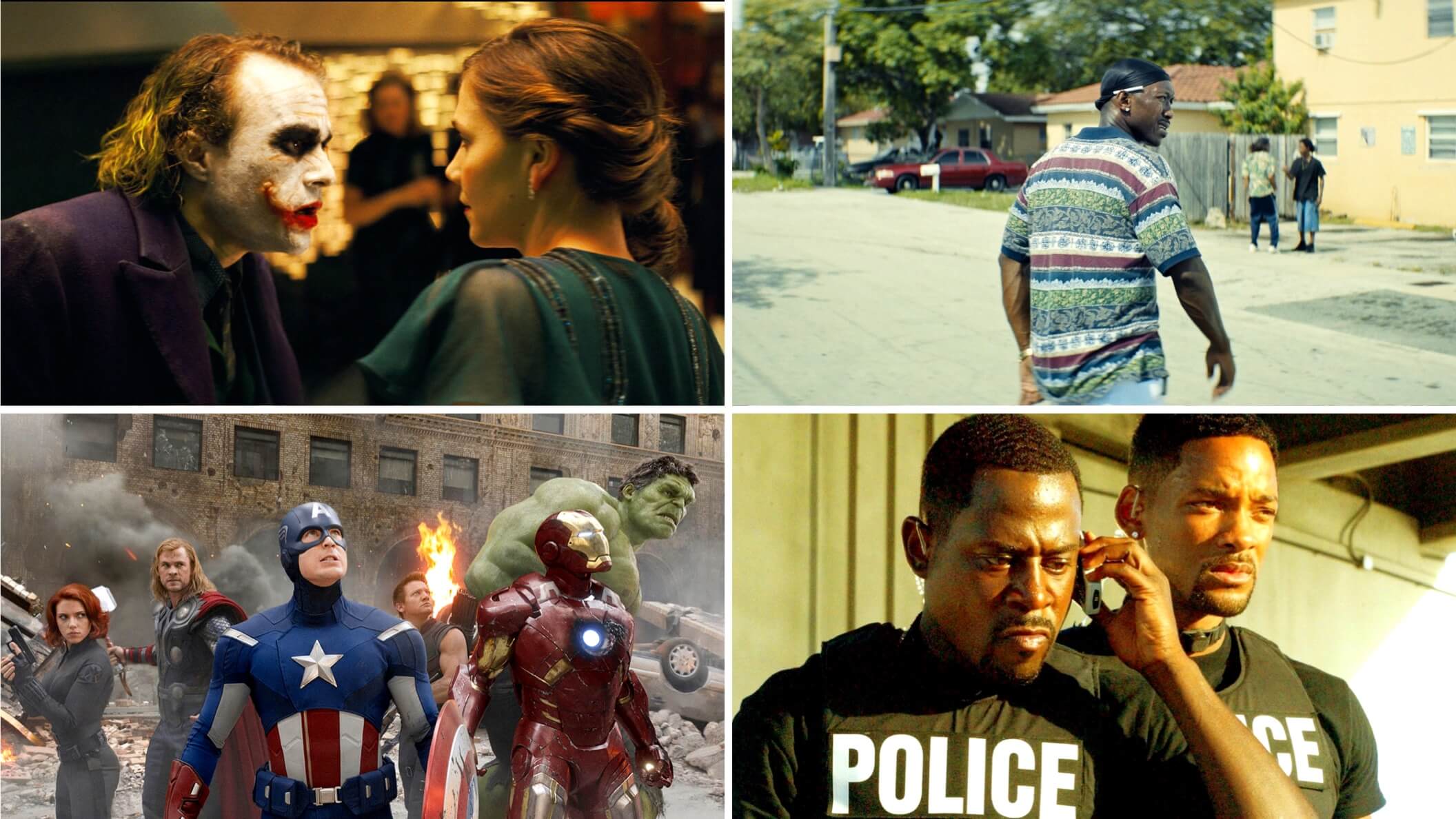It is fundamental knowledge that moving the camera closer or further from a subject has innate storytelling effects. But what happens when a filmmaker simply moves the camera around a subject? This is the arc shot. It commonly appears on the big screen as the hero shot, but today we’ll analyze a few more effective storytelling capabilities of the arc shot.
Watch: The Ultimate Guide to Camera Movement
Arc camera movement meaning
Let’s start with an arc shot definition
Let’s begin by first looking at the arc shot definition. As one of the most recognizable camera movements, it’s important to first clarify the path the camera takes in the arc shot before analyzing the effects it has on a scene.
ARC SHOT DEFINITION
What is an arc shot?
The arc shot in film, also called a 360 degrees shot or 360 tracking shot, orbits the camera around a subject in an arc pattern. In an arc shot, the subject is usually stagnant while the camera circles them in at least a semi-circle pattern. The term “arc” derives from mathematics meaning a segment of a complete circumference. This segment in the shot is the orbital path of the camera.
What is an arc camera movement used for?
- Centralize the audience’s focus
- Capture different aspects of a setting
- Create a dizzying effect in the audience
- Add energy to scenes without dynamic blocking
Camera arc movement
Centralize the audience’s focus
When cameras move, they are typically motivated by a subject’s movement. However, in an arc camera shot, the subject is usually stagnant. The camera orbits around a subject typically by using a curved dolly or Steadicam. Why do filmmakers choose to move the camera in an arc pattern?
Firstly, arc shots centralize the audience's attention. As the camera moves around a subject, the audience remains focused on the subject with a constantly changing perspective.
Take this scene from The Avengers for example.
The arc camera shot is crucial in this scene where The Avengers unite as a whole in action for the first time in the film. Take a look at how the shot movement creates this iconic moment.
The Avengers camera arc example
The subject in this shot is not one hero, but the Avengers as a unit. If the camera was stagnant (e.g., a static shot), we would only focus our attention on one character. But by using a camera arc, we rotate around The Avengers and perceive them as one single subject. This also echoes themes of unity found in The Avengers screenplay.
This effect of the camera arc in film is used in various movies to draw the audience's attention. It also can add incredible energy and drama to a shot between two characters.
Related Posts
Camera arc shot
Heighten tension and energy
Directors often use dynamic blocking or sharp dialogue to create conflict or tension in a scene. But one of the most effective ways at creating tension is through camera movement.
The arc camera movement is especially effective at heightening tension when characters barely move at all. Examples of this effect can be found throughout Christopher Nolan’s directing style. In one of Nolan’s best films, The Dark Knight, Nolan uses a 360 tracking shot to heighten tension on two occasions.
This scene is the best example of how the full orbit of the shot can create uneasiness and heighten tension in a scene.
The Dark Knight Arc shot example
Again, it is helpful to try and imagine this scene unfolding with a simple static shot. In a static shot, Heath Ledger’s performance would definitely keep the scene captivating. But to make the audience feel how Rachel feels, Nolan employs the 360 tracking shot.
The camera movement makes us feel uneasy, almost dizzy as the Joker circles around Rachel. Nolan even switches the direction of the shot to heighten these effects brilliantly.
Camera arc shot function
Reflect character experience
Even when a character is standing still, camera movement can help reflect their experience. Using camera movement is an effective way to communicate a character’s internal conflict or external conflict to an audience.
By ramping up the speed of a 360 degree shot, filmmakers can portray the frantic mindset of a character.
The opening scene of Moonlight uses the arc camera movement to reflect the frantic and desperate state of a drug addict. In the Moonlight screenplay, the character seeking drugs is described as a “zombie.” Let’s take a look at this scene to see how the arc camera movement reflects his state of mind.
Moonlight Arc shot example
Note how the 360 degree shot begins as soon as the drug addict begins asking for drugs. After he leaves, the shot lands on a two shot. This is because the shot is meant to reflect the experience of that sole character. When trying to depict the mindset of a frantic character, be sure to keep the arc shot in mind.
Related Posts
UP NEXT
The Ultimate Guide to Camera Shots
The arc shot is an extremely effective storytelling device for the right scene. To discover other shots that will help you tell your film’s story, check out our ultimate guide to camera shots. We break down over 50 types of camera shots that will help you become a well-rounded filmmaker.
Up Next: Camera shot guide →
Showcase your vision with elegant shot lists and storyboards.
Create robust and customizable shot lists. Upload images to make storyboards and slideshows.
